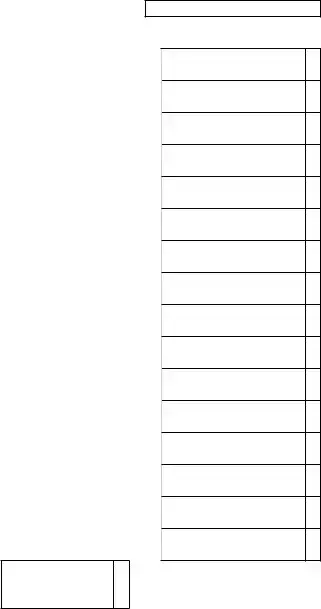Filling out the Michigan 4568 form accurately is crucial for businesses seeking to claim nonrefundable credits. However, errors are common and can lead to missed benefits or complications with the Michigan Department of Treasury. One frequent mistake is missing or incorrect Federal Employer Identification Numbers (FEIN) or TR Numbers at the beginning of the form. It's essential that this identification is accurately reported to ensure the form is associated with the correct entity.
Another area where mistakes occur is in the calculation of tax before all credits (line 1), where taxpayers might not correctly transfer the amount from Form 4567, line 53, or Form 4590, line 26. This baseline figure is critical as it impacts all subsequent calculations. Similarly, inaccuracies in reporting SBT credit carryforwards used (line 2) from Form 4569, line 13 can lead to an incorrect calculation of the tax after SBT credit carryforwards, distorting the taxpayer's true tax obligation.
Further errors are often found in lines 4a and 4b, where compensation and investment tax credits from Form 4570, line 26, and adjustments are made. The entry on line 4b is particularly prone to mistakes since it requires a negative number if Form 4570, line 20, is negative. Understanding that subtracting a negative number effectively increases the taxpayer’s liability requires careful attention to detail.
Numerous taxpayers overlook the need to accurately report the Research and Development Credit from Form 4570, line 33 (line 5), leading to an incorrect calculation of tax after this credit is applied. The sequential nature of the calculations on this form means that early errors can have a cascading effect, leading to a significant misrepresentation of the tax liability after nonrefundable credits are applied.
Another critical oversight involves the calculation of tax after Gross Receipts Filing Threshold Credit (line 9). Failing to subtract lines 7 and 8 from line 6 as instructed can result in an incorrect representation of tax liability, with possible under- or overestimation.
Incorrect entries on lines involving specific credits, such as the Homeless Shelter/Food Bank Credit (line 11) or the Renaissance Zone Credit (line 21), often happen due to misinterpretation of eligibility requirements or calculation errors. These lines demand accurate transcription of amounts from respective detailed forms. Overlooking these can lead to understated tax benefits.
The sum of all nonrefundable credits (line 40) is another area fraught with potential errors. This line requires accurate addition of various credits. Incorrect summation here can impact the final determination of tax after nonrefundable credits (line 41), potentially leading to an incorrect tax payment.
Failure to properly address negative numbers, particularly in the calculation of tax increases due to negative adjustments on lines such as 4b and 15, shows a misunderstanding of how subtraction of negative values works. This conceptual error can lead to an inaccurate tax liability projection.
Finally, overlooking the importance of completing Form 4568 as part of the tax return filing as directed in the instructions can result in an incomplete filing, potentially delaying the processing of nonrefundable credits. Ensuring that all forms are filled out correctly and submitted together is crucial for a smooth processing experience.


